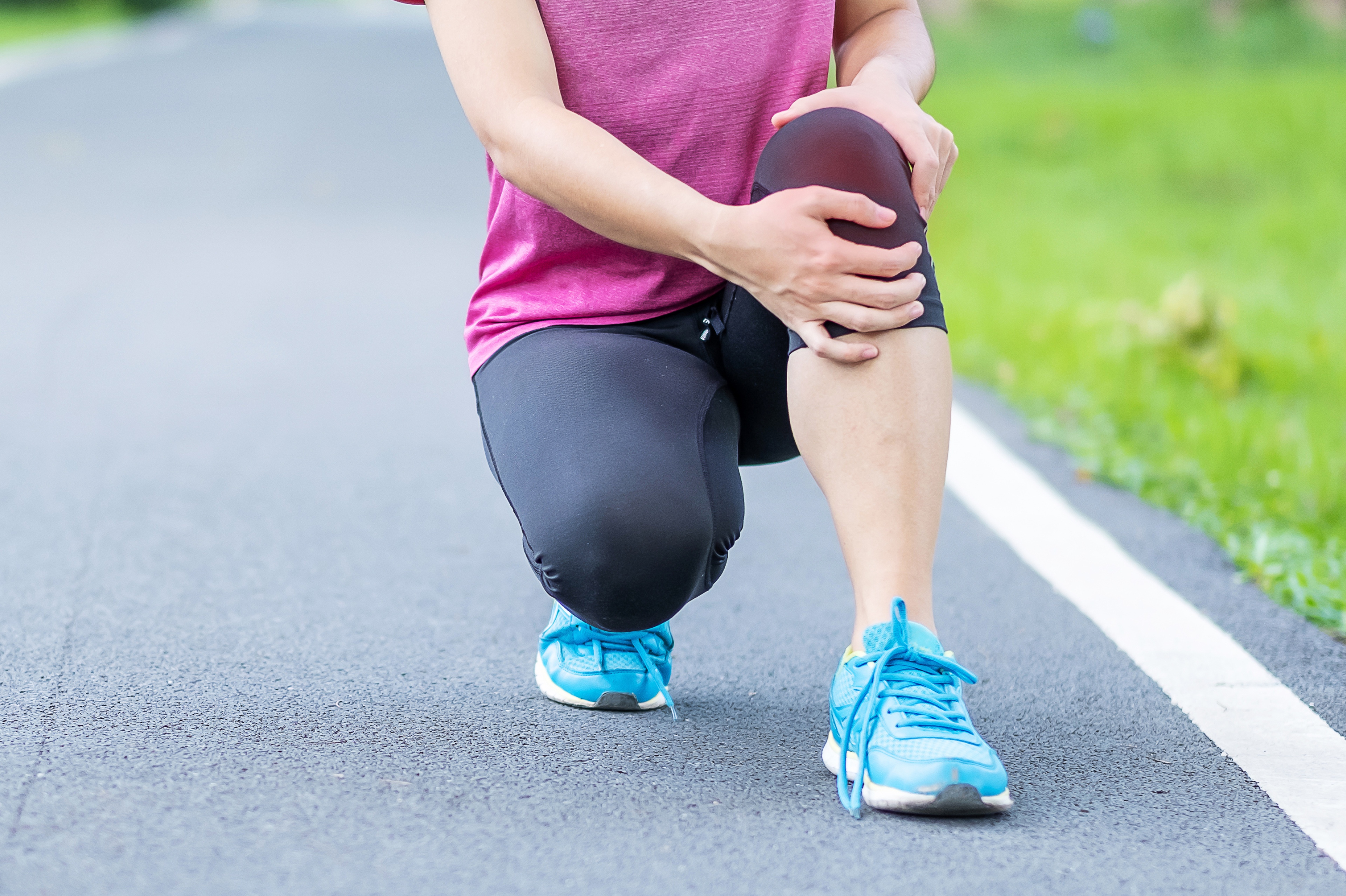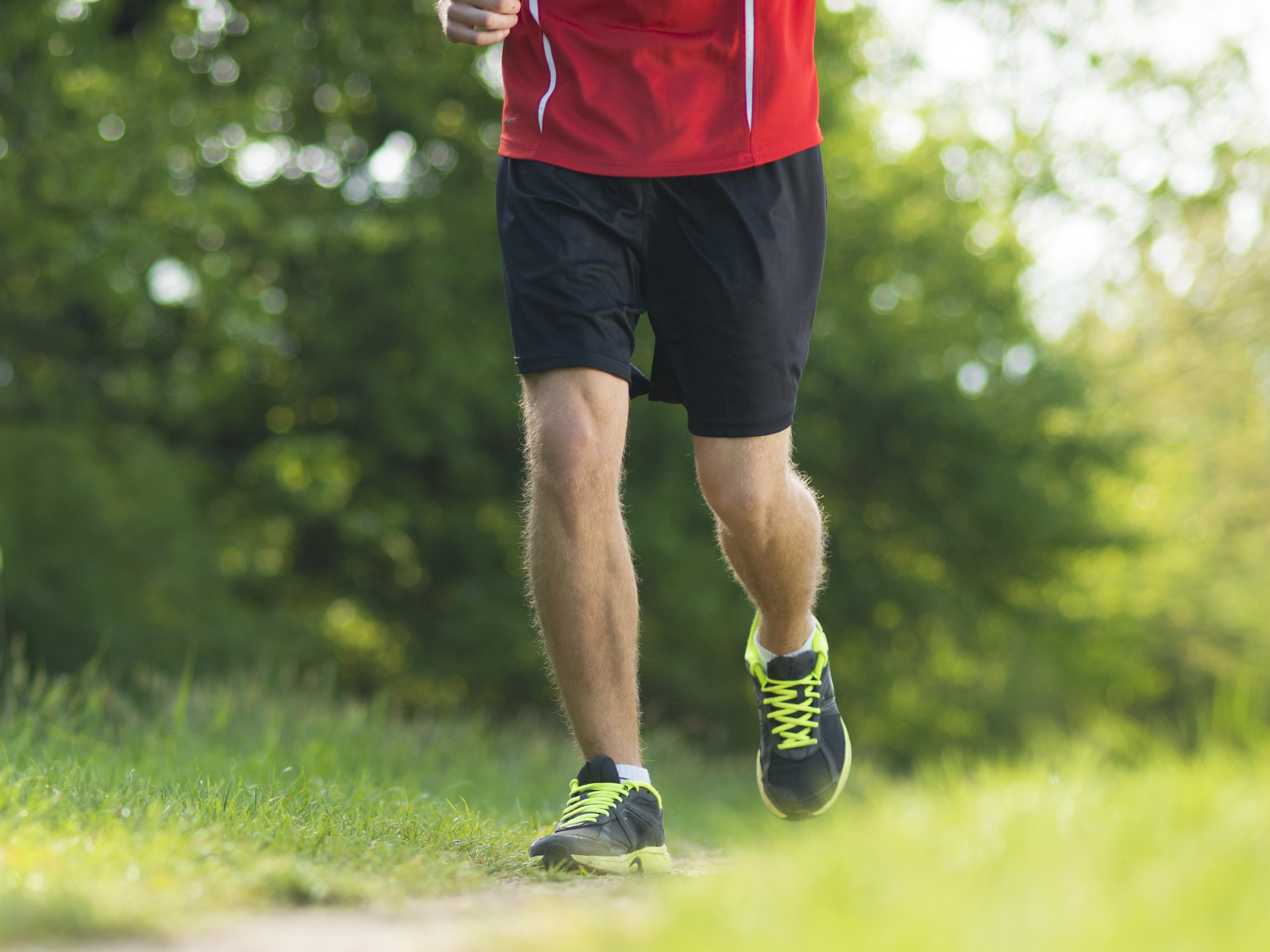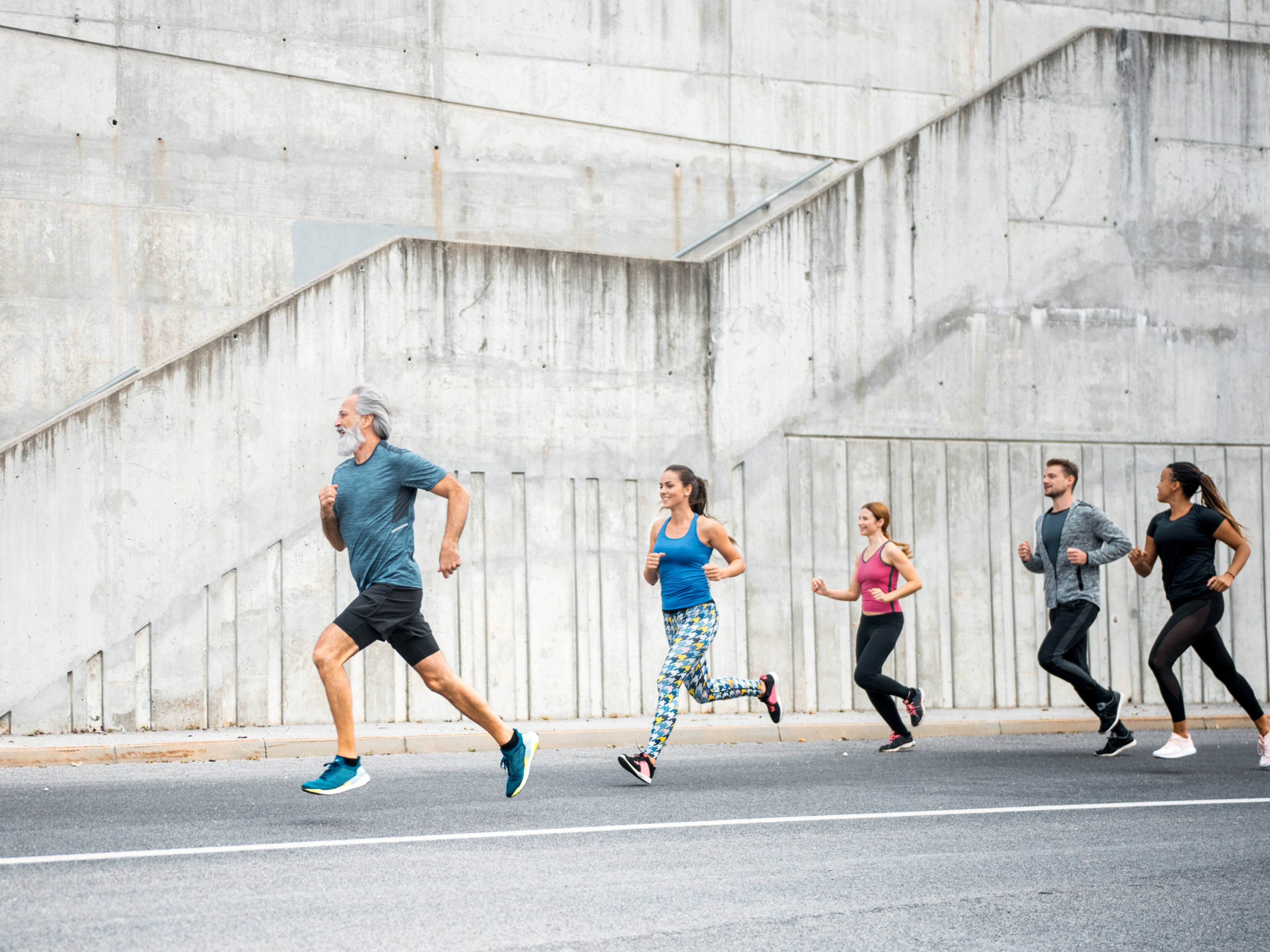Squat exercises for patellar tendonitis - 3 things runners should know
Why the squat exercise can help with patellar tendonitis
When injured, your patellar tendon loses some strength, meaning it can't tolerate loads as well as before. Injured patellar tendons are also very sensitive to compression, stretch, and sudden load increases.
Considering these factors and the current research, the most important exercises for patellar tendonitis are those that:
- Strengthen your tendon and restore its capacity to cope with your sporting loads and
- are adaptable, allowing you to carefully balance each element of stress (compression, stretch, and sudden loads) as your tendon heals.
Squats work well because they meet both of these needs.
But, as useful as squats may be for patellar tendonitis rehab, they can slow your progress or worsen your injury if you're not doing them correctly.
That's why it's crucial to know how to adapt your squats to match your stage of recovery.
Bear in mind that squats only make up part of the treatment for patellar tendonitis. A comprehensive rehab plan must include stretches and exercises for other muscle groups to ensure running loads are spread optimally throughout your body. We'll discuss these in a future blog post.
How to adapt your squats correctly
During your patellar tendonitis rehab program, you'll need to adapt your squats to meet your unique goals at each phase of your recovery.
Adjusting squats to suit your case of patellar tendonitis
By looking at each in more detail, you'll better understand how to modify your squat during rehab.
Type of contraction: Isometric, isotonic, or plyometric?
Different types of muscle contractions place different demands on your tendon. They develop different tendon properties, e.g., pure strength vs. the ability to handle quick explosive loads.
1. Isometric squats
Isometric squats or exercises involve holding the contraction in different positions rather than moving through a range of motion.
Examples of isometric squats for patellar tendonitis
Benefits of isometric squats:
- These are lower-load exercises, so they are less likely to aggravate the tendon as much as the other types of contractions
- They are good for early-stage rehab
- They are easy to control
- They have been shown to help reduce patellar tendon pain
2. Isotonic squats
Isotonic squats or exercises involve moving through a range of motion rather than holding in one position. So your muscles and tendons shorten and lengthen as you move, making these exercises more challenging for your tendon.
You should usually only start them once your tendon can tolerate isometric exercises and its irritability has started to decrease.
Examples of isotonic squats for patellar tendonitis
Benefits of isotonic squats
- Isotonic contractions are good for building strength in both directions (as the tendon lengthens and shortens)
- They resemble the movements you do in your daily life and sport
- They strengthen the tendon through its full range of motion
3. Plyometrics
Plyometric exercises (jumping and hopping) involve explosive squat movements that mimic the forces of running and place high demands on your tendon.
Plyometric contractions are the most advanced types and should only be done once you’ve restored a good base level of strength in your tendon via heavy-load isotonic exercises.
Examples of plyometric exercises for patellar tendonitis
Benefits of plyometrics
- Plyometrics are good for training your tendon to cope with explosive forces
- They are vital in the later stages of rehab to get your tendon ready for jumping and running sports
Range of motion - how low should you squat?
The more you bend your knee, the higher the load on your patellar tendon and the more it is compressed against your knee bones.
When your tendon is very sensitive, it may not tolerate deep squats where your knee has to bend fully.
That's why it's best to start your strength training in positions where your knee doesn't bend too much. For example, you can do a high wall-sit exercise for isometrics or high box squats for isotonics.
You should gradually increase the depth of your squat as your tendon becomes stronger and less sensitive until you reach a full-range squat without pain.
Adding weight to your squats
Research shows that running and jumping can place a level of force up to several times your bodyweight on your legs.
So, when rehabilitating your patellar tendon, you need to expose it to more and more loads. This way, you'll restore your tendon’s full strength and prepare it properly for returning to your sporting activities.
It's crucial to build this tolerance gradually.
Any weight or load you add to your squats must match your tendon’s current strength and sensitivity. Increasing the weight too suddenly can worsen your injury.
A typical weight progression for squats involves:
- Starting with double-leg exercises and bodyweight only
- Adding weight to double-leg squats
- Later, progressing to single-leg squats
The patellar tendonitis rehab plan in the Exakt Health app is designed to apply all these principles of progression when selecting your exercises. It helps you to do the most appropriate exercises at each stage of your recovery.
Common pitfalls with squat exercises
There are several ways to progress your squats, but sometimes people get it wrong, which sets their rehab back. Here are a few common mistakes to avoid:
1. Not pitching or progressing your squats correctly
People often do too much too soon or don't progress their exercises soon enough. In both cases, you risk not getting the full benefit of the exercise or aggravating your injury.
You should avoid sudden load increases and always start with light loads. Once your tendon has fully adapted to these, you can aim to increase them gradually.
Knowing when you're ready to move to a higher load level and when you should stay at the same level is essential for progressing safely through your exercise program.
The Exakt Health app guides you through this process step by step. It provides straightforward advice on when to progress, maintain, or take your exercises back a level — helping to minimize flare-ups and keep you on track with your recovery.
2. Using poor form during your squats
Another common mistake is using poor form or technique when doing squats.
Whether your hips, knees, and ankles are not aligned properly, or you’re doing the exercise too quickly, it can put unnecessary strain on your patellar tendon and worsen your pain.
In our article about how to perform a bodyweight squat with good technique, you can learn more about preventing this. The rehab plan in the app also provides clear instructions and videos to help you get into the right position and maintain good form throughout your exercises.
3. Doing your exercises too often
Your body requires a recovery period after exercise to repair and strengthen itself. If you train too often and don’t allow it to fully recover, you can make your injury worse.
The recovery time you need depends on the type of exercise you do and increases as you start doing heavy-loaded and plyometric exercises. The app takes this into consideration when it suggests your ideal training plan.
4. Not understanding your pain
It's important to know that some pain is expected and OK when recovering from patellar tendonitis.
Fearing and avoiding pain at all costs, or ignoring and pushing through it, will only delay your recovery or worsen your injury.
The good news is that you can use pain to guide you through rehab. It's all about knowing your baseline pain levels and what pain ranges are safe for you to work in.
If you want to learn more about managing your patellar tendon pain and using it as a guide, our patellar tendonitis pain management article has all the advice you need.
Need more help with your rehab? The patellar tendonitis rehab program in the app is a great resource for any runner trying to overcome patellar tendonitis. It considers all of the principles discussed in this article and provides a step-by-step guide to help you get better.




